The right children's books about empathy can help parents and teachers teach kids how to show kindness, generosity, be sensitive to the needs of others and learn how to "walk in another person's shoes." Understanding the emotions and point of view of others improves a child's ability to function in society, make friends, build meaningful connections and become positive members of a community.
In fact, research has shown that reading fiction promotes empathy and helpful behavior towards others, especially people who are unlike themselves. Reading these picture books will provide a valuable starting point for conversations with young children about what it means to have empathy, and not just sympathy, for others.
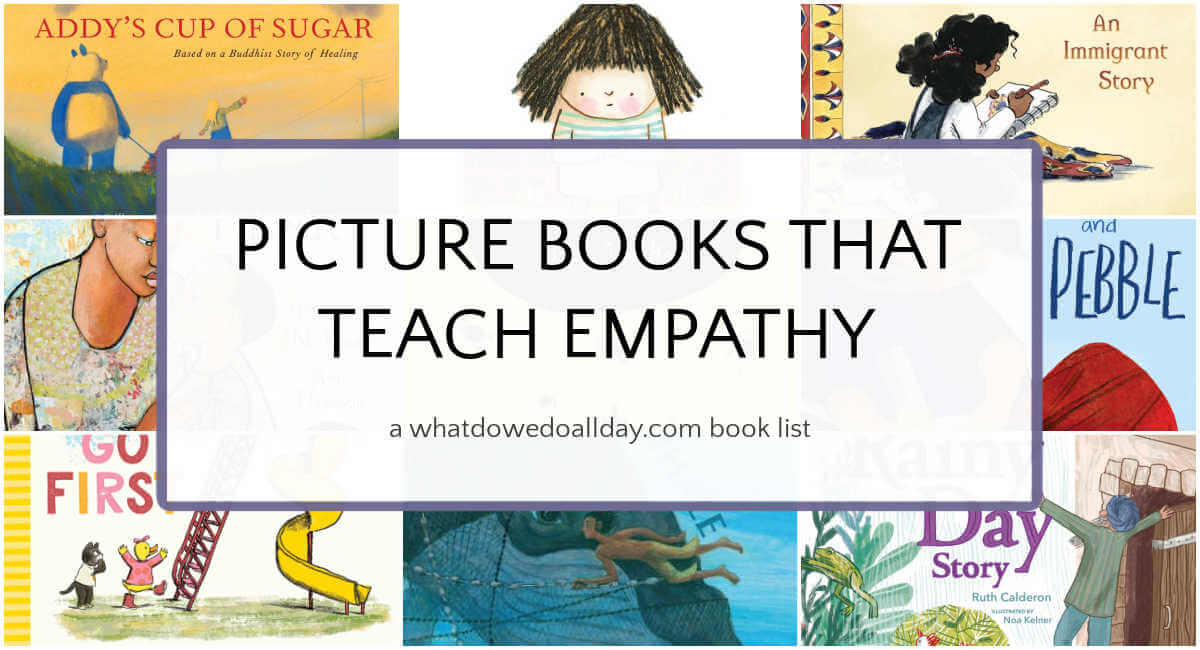
So, the next time you are choosing read aloud books, be sure to include a few of these titles and start a conversation with your child about empathy. Be sure to also check out our list of chapter books and novels to teach empathy.
Note: this list contains Amazon and Bookshop affiliate links. Purchases made through these links may earn a commission for this blog. Bookshop also supports independent bookstores.
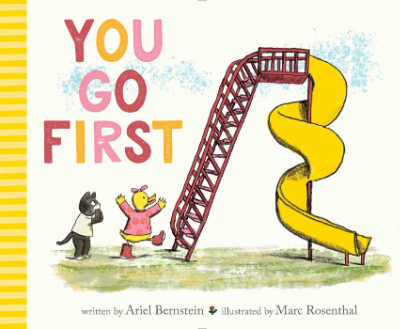
You Go First by Ariel Bernstein, illustrated by Marc Rosenthal
In this delightful book, Duck is very excited about trying out the new twisty playground slide. Yet, her friend, Cat, continues to come up with excuses why they shouldn't venture down the slide. It's clear to the reader that Cat's protestations are a result of anxiety, even as Duck continues to express enthusiasm for the slide. Eventually, it appears that Cat has succeeded in dissuaded Duck from trying out the slide and now Cat feels bad. The resolution reveals that both friends harbor deep empathy for one another. Ages 3 and up.
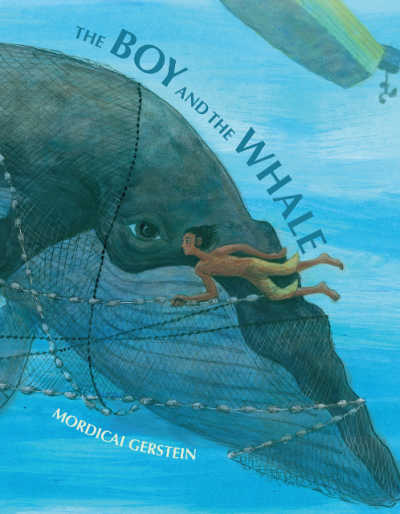
The Boy and the Whale by Mordicai Gerstein
A boy and his father are out fishing when they come across a whale trapped in a net. The father is very concerned about the net and wants them to leave the whale, arguing that a rescue attempt would be too difficult. The boy, however, does not want to abandon the creature and is determined, despite the emotional and physical effort, to rescue the whale. An important story about the determination to do the right thing by others, even if it's difficult (and even if they are animals). Ages 4 and up.
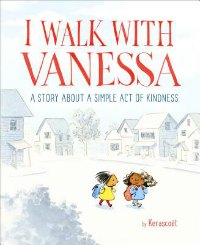
I Walk with Vanessa by Kerascoët
This lovely title is a wordless book about the power of kindness and its role in creating friendships. New girl, Vanessa, is being bullied by a schoolmate. Another girl sees this happen and after some thought decides to walk with Vanessa to school. Soon they are joined by others and the bully retreats. I love how this simple book can start an important conversation about how being the first person to do the right thing can help others to find the courage to follow. Ages 4 and up.
MORE: Children's books about kindness
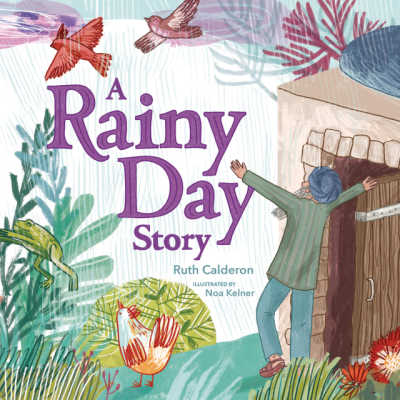
A Rainy Day Story by Ruth Calderon, illustrated by Noa Kelner
This Talmudic story teaches the universal value of considering the needs of others as well as oneself. Rabbi Hanina is walking home in the rain. Illustrations depict an unhappy man, but birds, frogs and other creatures enjoying the pleasures of the rain. The Rabbi asks God why it must rain and cause him so much discomfort and displeasure. When God stops the rain at his request, Rabbi Hanina notices that while he may be content, the rest of the world now suffers. Children will want to discuss the Rabbi's choices and his change of heart. An endnote includes the original Babylonian Talmud text (Taanit 24b) in both Hebrew and English. Ages 4 and up.
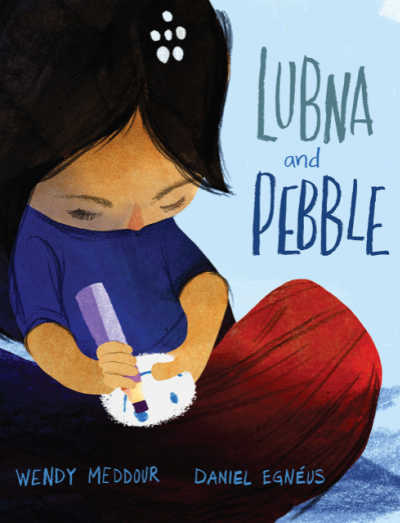
Lubna and Pebble by Wendy Meddour, illustrated by Daniel Egnéus
Lubna and her father are refugees. They live temporarily at the "World of Tents". Lubna has no toys so she picks up a pebble, gives it a face, and turns it into her friend. This book is surprisingly emotional, highlighting Lubna's creativity and resiliency. In the midst of an unstable situation, Pebble provides comfort. When Lubna meets Amir, a boy refugee on his own, the two become friends and play with Pebble. When Lubna and her father then get word they will travel to a new country, Lubna finds courage and gives Pebble to Amir. Ages 5 and up.
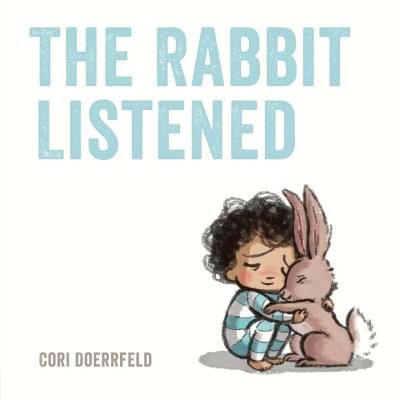
The Rabbit Listened by Cori Doerrfeld
Taylor (the child's gender is ambiguous) is building a block tower when a bird comes and knocks it over. Taylor is very upset and several animals come over to try and fix the situation. They go about it all wrong, however. They shout, vow revenge or try to dismiss Taylor's grief. It's not exactly comforting. The rabbit, however, listens, allowing Taylor to experience an entire range of emotions over the loss of thier tower. I absolutely adored this book and parents will learn a good lesson for themselves when reading it, too! Ages 3 and up. Also read Doorrfeld's book, Beneath.
MORE: Children's books to build emotional intelligence
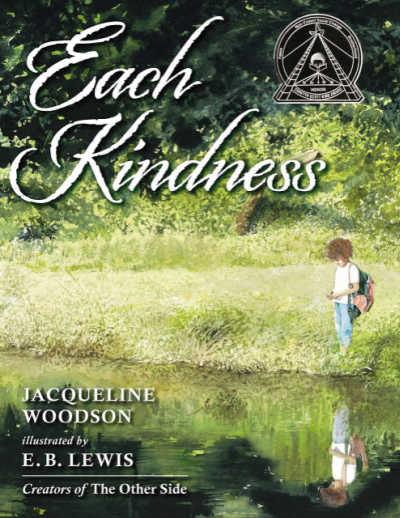
Each Kindness by Jacqueline Woodson, illustrated by E.B. Lewis
New girl, Maya, finds herself alone at school. Her obvious poverty sets her apart and the other children reject her overtures of friendship, giving into their own biases. Another girl, Chloe, narrates the action and the way the other children reject Maya, including her own admission, “She’s not my friend.” One day, their teacher drops a stone into a bowl of water to demonstrate how powerful the ripples from a single act of kindness can be. “Even small things count,” she says. Chloe decides that the next day she will be kind to Maya, but Maya never returns to school and Chloe regrets that she never grabbed her chance to do the right thing, an important lesson. This book could so easily sink into the depressing and didactic, but Woodson’s beautiful text elevates the story into a moving reminder to show kindness every chance we get. Ages 5 and up.

The Arabic Quilt: An Immigrant Story by Aya Khalil, illustrated by Anait Semirdzhyan
The Arabic Quilt is an essential addition to your diverse, anti-bias bookshelf. Kanzi and her family recently immigrated from Egypt and Kanji is nervous about being different from her classmates. However, a class project involving a paper collage quilt of students’ names written in Arabic provides a catalyst for all the students to learn about the importance of valuing diversity and different languages. Lovely, heartwarming and uplifting. Ages 5 and up.
MORE: Children's picture books about refugees

Mae's First Day of School by Kate Berube
Mae is very nervous about going to school! She has particular anxieties about missing her mother, not being able to perform certain tasks. When she gets to school she climbs a tree, as does another little girl who has first day jitters. An empathetic teacher, Ms. Pearl joins them and explains her nerves, too! Ages 4 and up.
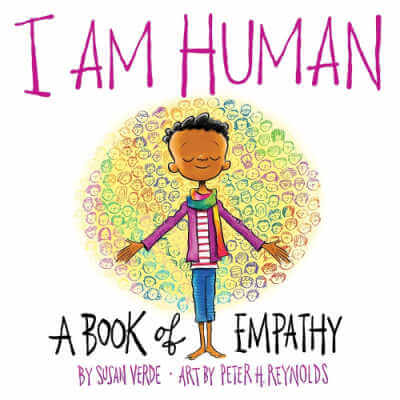
I Am Human: A Book of Empathy by Susan Verde, illustrated by Peter H. Reynolds
A child (not specified as a boy, but will read that way to most people) details all the things that makes them human. In the opening pages, they declare, "I was born. A miracle! One of billions but unique!” After that, in straightforward terms, the child explains how they have feelings, how they see the world, the choices they can make and how those choices can affect others. The book ends on a positive note, "I will keep trying to be the best version of me." Ages 3 and up.
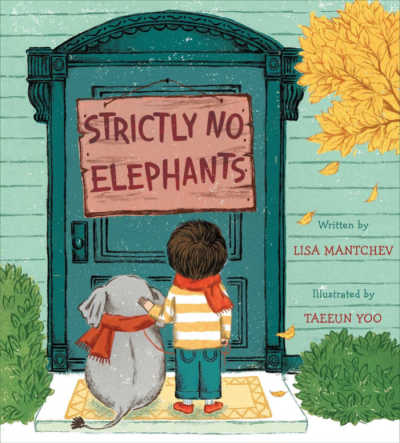
Strictly No Elephants by Lisa Mantchevby, illustrated by Taeeun Yoo
In this popular picture book about the rewards of standing up for one's friends, a boy brings his elephant to a Pet Club. When he arrives, he finds out that his pet friend is not welcome. However, he refuses to go along with the exclusionary group and remains loyal to his pet. Instead forms an alternative club with other children whose unusual pet friends have been similarly rejected. Ages 3 and up.
MORE: Children's Books about Standing Up for Others
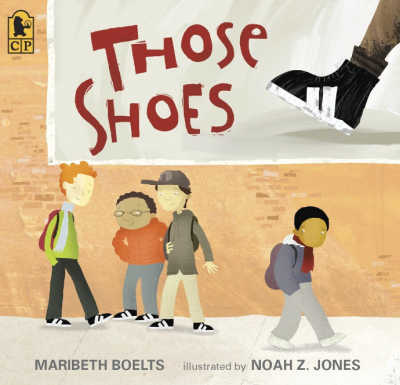
Those Shoes by Maribeth Boelts, illustrated by Noah Z. Jones
Jeremy wants the latest pair of trendy shoes. All his friends have them but his grandmother can't afford to buy him a pair. Jeremy finds a pair at a thrift store and buys them even though they are too small. When he makes friend with a kid at school who needs them more than he does, he gives them to him. I love how this book is honest about the struggles Jeremy has about giving the shoes away. He really wants to keep them for himself but in the end does the right thing on his own. Jeremy feels embarrassed about the shoes he does have to wear and that doesn't disappear, making the act of kindness even more powerful. Ages 5 and up.
MORE: 42 Books about Strong and Gentle Boys
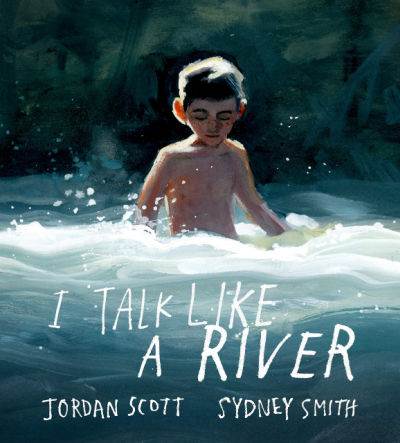
I Talk Like a River by Jordan Scott, illustrated by Sydney Smith
A boy who stutters describes what it feels like to be unable to get out the words that flow through his mind and how his father has taught him that he "talks like a river." The boy and his dad head down to the river after a bad day and the water offers comfort while his dad describes how his speech is sometimes choppy, sometimes smooth, sometimes churning, just like the river. A gorgeous, compassionate picture book not to be missed. Ages 4 and up.
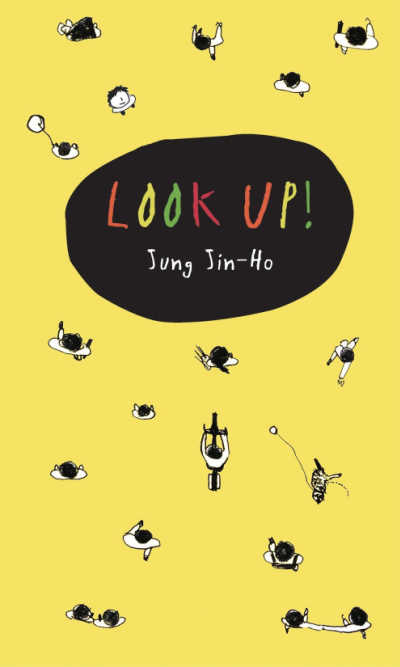
Look Up! by Jung Jin-Ho
A girl in a wheelchair gazes over her balcony onto the sidewalk below. She calls to passersbys to “Look up!,” but they ignore her until one young boy looks up and then lies down in order to look up at her. This is such an unusual and interesting book. Kids will love talking about both the perspective of the girl and the people on the sidewalk, as well as how being aware of our surroundings will help us see how to be generous to others. Ages 4 and up.
MORE: Disability in children's picture books
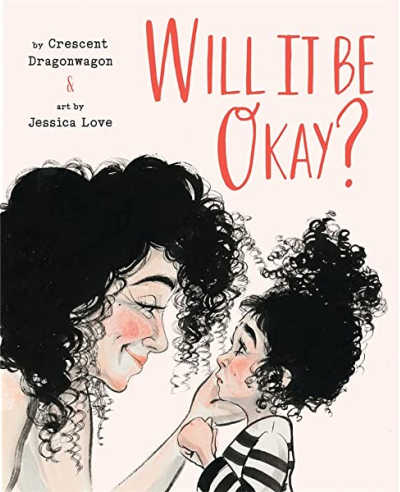
Will It Be Okay? by Crescent Dragonwagon, illustrated by Jessica Love
Will It Be Okay? not only provides kids with the reassurance they need when they ask important and scary questions, it sneakily gives parents a roadmap for how to talk to their children! The narration is written as a dialogue between mother and child, with the child asking questions that are sometimes simple, such as "What if it snows?" and other times emotionally complex, like "What if I'm mad at everyone?" The parent gives straightforward answers that acknowledge but do not diminish the child's fears, but also provide suggestions for how to handle their anxieties. A must-read book. Ages 3-103.
MORE: Books that Offer Hope and Reassurance
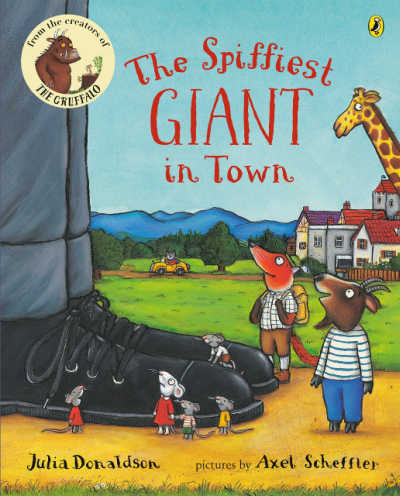
The Spiffiest Giant in Town by Julia Donaldson, illustrated by Axel Scheffler
George is a very scruffy giant! He decides to get a haircut and a new set of clothes and… voilà! He becomes the spiffiest giant in town. However, as he travels through the area singing a little ditty about his spiffy-ness he encounters others who need his help. He makes a present of his tie to a giraffe with a cold neck, offers his sock to a fox who needs a sleeping bag, and before you know it, he's gifted away all his new clothes. His kindness does not go unnoticed and soon he receives a gift more precious than the clothes he gave away. Ages 3 and up.
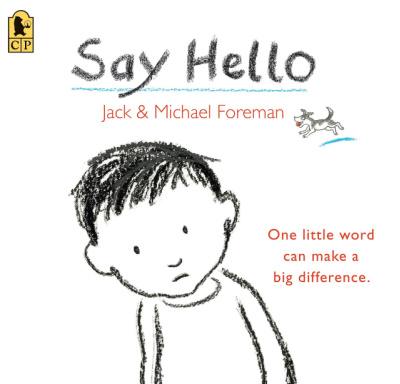
Say Hello by Jack Foreman
With only a few words per double page spread, we see a lonely dog looking for a friend. Soon he is accepted by a group of children playing soccer and a similar tale begins with a lonely boy. The boy voices his thoughts about what it is like to feel left out. When the dog's ball rolls over to him, the group of children, "say hello!" A deceptively simple book with a big message. Ages 3 and up
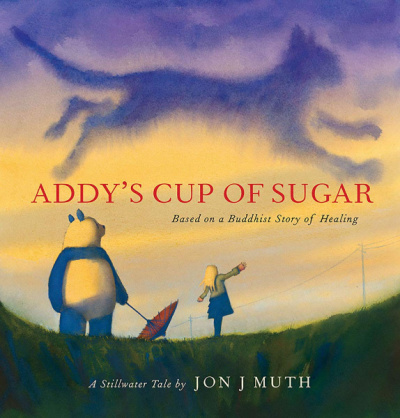
Addy's Cup of Sugar by Jon J. Muth
As with his other books, Muth draws upon Buddhism to help kids understand big emotions and tough subjects. After Addy's kitten is killed by a car, she turns to Stillwater the Panda to help her through her grief. Stillwater tells her he can help her, but only after he gets a cup of sugar from a household that has never experienced death. Addy sees that her feelings are shared by many and learns that her kitten will be treasured through memories. As always, Muth's illustrations are majestic and moving. Ages 4 and up.
MORE: Best Children's books about death and grief
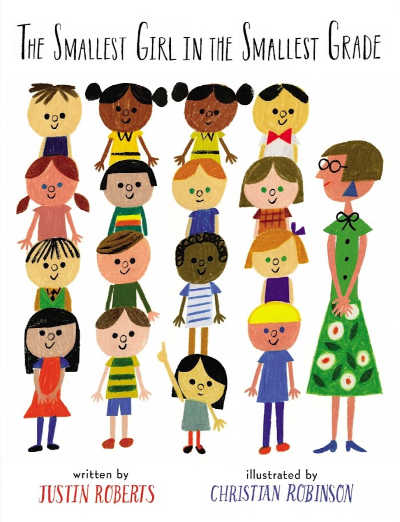
The Smallest Girl in the Smallest Grade by Justin Roberts, illustrated by Christian Robinson
Sally may be small but she is the most observant kid in the class. She notices everything, especially when someone else is being bullied or teased. Sally decides the right thing to do is to stand up for others, and teach her peers about kindness. I liked this book a lot and how it emphasized that you can be kind no matter what your stature—physically or socially. Ages 3 and up.
MORE: Picture Books that Teach Meaningful Values

A Friend for Henry by Jenn Bailey, illustrated by Mika Song
Henry looks about his classroom, he notices all the details about the objects and his fellow classmates. He is looking for a friend and wonders how he will fit in. As he tries to find a child to be his friend, there are some misunderstandings and set-backs, and a bit of sensory overload at times. All children will recognize the challenges and rewards that come with learning how to be a friend. Ages 3 and up.
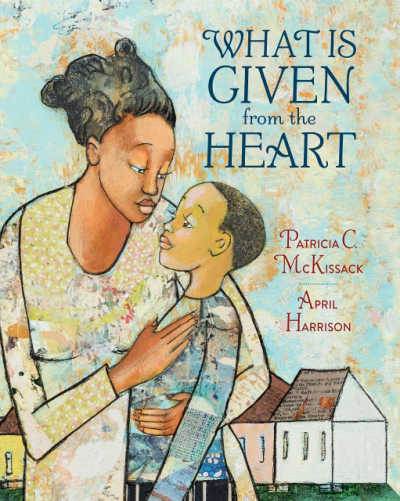
What Is Given from the Heart by Patricia C. McKissack, illustrated by April Harrison
A pastor announces to the congregation that they will be making "love boxes" for those in need, for “what is given from the heart reaches the heart.” At first, James Otis, a boy with very little himself, has trouble seeing what he can possibly give a family that lost everything in a fire. His mama turns their tablecloth into an apron and James Otis searches his heart and discovers there is always something you can give someone else. This is McKissack's final picture book. Read it! Ages 4 and up.
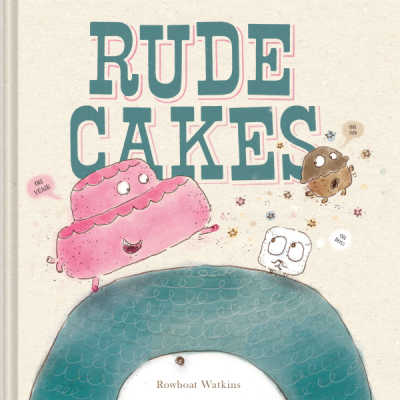
Rude Cakes by Rowboat Watkins
Kids will love this quirky book about a cake with no manners. The cake in question never says please, never shares, never waits its turn -- you get the idea. One day a giant cyclops comes along and turns the rude cake into a cute hat. (I said it was a quirky book!) This is the important catalyst that turns Rude Cake around, and they learn that perhaps they should think about others before themself. Ages 3 and up.
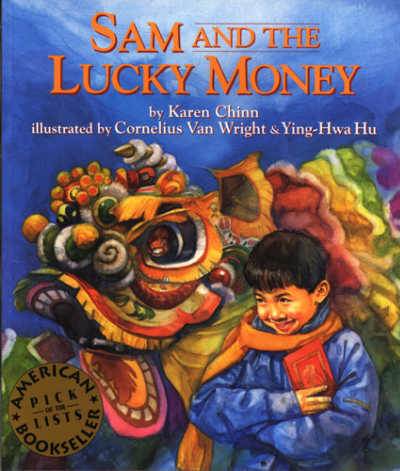
Sam and the Lucky Money by Karen Chinn, illustrated by Cornelius Van Wright and Ying-Hwa Hu
Sam is excited to be able to spend his lucky Lunar New Year money. He has four dollars and his mom has told him he can buy anything he wants. On their trip through the neighborhood Sam notices a homeless man with bare feet. As he contemplates how to spend his money he gets frustrated that the four dollars is never enough to buy what he wants. His mother reminds him to appreciate what he has. During a second encounter with the homeless man, Sam understands how he can best spend his money. Ages 5 and up.
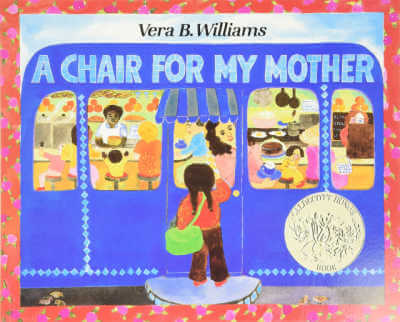
A Chair for My Mother by Vera B. Williams
Familial love is a great motivator. The narrator, a young girl, describes how her family lost everything in a fire. They found a new home and their neighbors donated furniture but what they lacked was a comfortable chair for her mother to rest in after her days of work as a waitress. The family saves their change in a jar and when the coins finally reach the top, they set off to buy the perfect chair. The story is quietly appealing and shares a valuable lesson not just about perseverance and love, but about recognizing that for many families, having a good chair is a luxury. Ages 4 and up.

Sparkle Boy by Lesléa Newman, illustrated by Maria Mola
Casey loves all things that sparkle. Yes, he loves to play with trucks and blocks, but when he sees sparkly skirts and jewelry he wants those too. The grownups are all accepting and let Casey be himself, but his sister Jesse is skeptical and insists that sparkly stuff is not for boys. However, one day at the library when another child teases him, Jesse stands up for her brother. Sometimes it takes a while for a child to find their voice, but this book shows that it's never too late. Ages 4 and up.
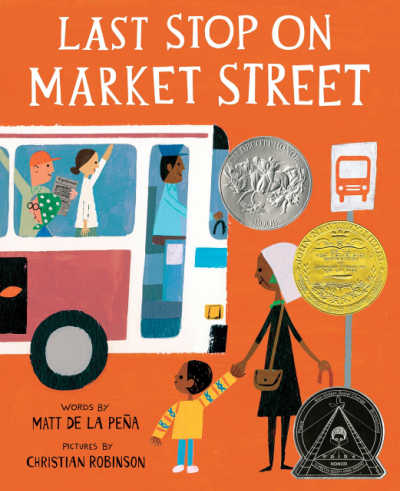
Last Stop on Market Street by Matt de la Peña
A boy and his grandma catch the bus. We don't yet know where they are headed, but along the way the boy asks questions about why they don't have certain luxuries. He wants to know why they don't have a car or an iPod. The grandma has a ready answer about the advantages of what they do have and encourages him to think of positive aspects of lacking material goods. Ages 4 and up.
MORE: Children's books about generosity
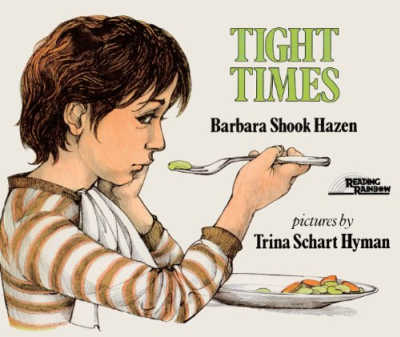
Tight Times by Barbara Shook Hazen, illustrated by Trina Schart Hyman
A boy wants a dog, but his parents tell him "times are tight." One day his father loses his job and the boy heads out to the stoop while his parents talk. Outside he finds a cat. It's not a dog, but his parents let him keep it. The book offers no tidy solutions. Their troubles are not solved, the father does not miraculously get a new job. Instead, life goes on and readers are left with a realistic picture that not everything a swift resolution. Ages 4 and up.
MORE: Children's books that address poverty, hunger and homelessness
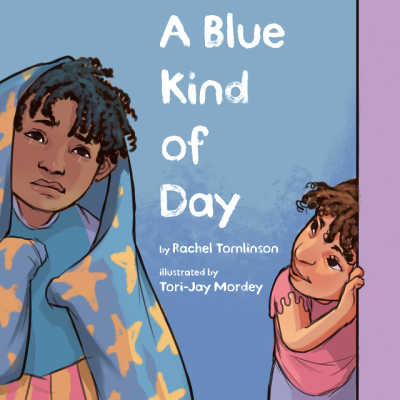
A Blue Kind of Day by Rachel Tomlinson, illustrated by Tori-Jay Mordey
Author Tomlinson tackles a child's feelings of depression and the confusing emotions that it can produce. An Indigenous Australian boy, takes to his bed during a difficult day. He doesn't understand how to handle is "tangled" feelings. His parents show him patience and compassion, assuring him that his feelings are nothing to be ashamed of. Ages 4 and up.



Nancy says
Thanks for gathering this list. I'm going to use it to order books to read to my grandsons.
Erica MomandKiddo says
Enjoy and happy reading!
Rachel says
Thank you Erica - this list is exactly what I had in mind with my request! We have read a couple of these titles in the past but there are some great looking books here that we will add to our library queue. You are the best!
Erica MomandKiddo says
You're welcome, Rachel. I'm glad it will be useful for you and thanks so much for the suggestion, it was a great idea.
Anya says
Wonderful list! Thank you for sharing it.
Erica MomandKiddo says
I hope you enjoy reading the books!
Jill says
Another great choice would be Maddi's Fridge by Lois Brandt. It's about a girl, Maddi, who doesn't have enough to eat. Maddi doesn't want anyone to know, so when her friend finds out, she asks Sofia to keep it a secret. In the end, Sofia does tell, though, because, as Sofia says, Maddi is more important than a secret. This is a beautiful book about love and trust.
Erica MomandKiddo says
I hadn't heard of that one, thanks so much for the recommendation. I'm going to see if our library has a copy.
Erica MomandKiddo says
I just put it on hold! It looks great and I will add it to the list after I've read it.
Ana says
Thanks for they list! I can't wait to read Last Stop On Market Street!
Michelle says
I've read two of these - especially loved How Dalia put a big Yellow Comforter in a Tiny Blue Box. I love the list! I have to go find all of them and then some. What a marvelous collection!
Erica MomandKiddo says
Thanks, Michelle! I hope you enjoy the books.
Jan says
Hi Erica. This is a great list. I'm looking for picture books that teach about differences–specifically facial or special needs differences similar to Wonder. Any suggestions? Thanks!
Erica MomandKiddo says
Good question! I'm sorry, I'm not familiar with any. I hope you can find something!
Mary Lynne Foster says
There is an excellent picture book called Be Good to Eddie Lee by Virginia Flemming. I'll quote the amazon synopsis:
"Christy's mother always tells her to be good to Eddie Lee, a neighborhood child with Down's Syndrome. But Christy wants to run and play -- and not worry about Eddie Lee tagging along. One hot summer day, though, Eddie Lee takes Christy to a secret place in the woods and teaches her that beautiful things can be found in unexpected places.
--"What makes Fleming's first book so effective are the carefully selected details and authentic portrayal of the children's attitudes -- as well as Cooper's luminous art, summoning up all the enchantment of a lovely summer day and presenting Eddie Lee as believably endearing". -- Kirkus Reviews, pointer review
"(A book) that can lead children away from harmful stereotypes and labels". -- Book Links"
I highly agree with the reviews quoted. I read it to my second grade class and they were enthralled. What was very interesting to me was that they saw JimBud, the neighbor boy who wants to play with Christy and is out and out mean to Eddie Lee, as a 'mean' character, but kept saying that Christy was really nice to him and wanted to play but JimBud didn't want to. The story makes it clear that Christy does not really want to play with Eddie Lee because he looks different, is a sloppy eater, and seems slow and uninteresting. They sort of refused to pick up on this. Christy is a nuanced character who knows the right thing to do but doesn't really want to do it. She does, in the end, see the value of Eddie Lee's friendship. We did a lot of character study on each of the characters and they finally started to see her struggle. The pictures are beautiful and represent Eddie Lee realistically and thoughtfully. My class loved it and I can't recommend it highly enough. Actually, our whole school (K-5) read it in March as our all-school social justice read aloud and it was very successful. It also made me realize how so many of the great books the children read have 'good' and 'bad' characters, pretty clearly marked and how muchthey will try to fit a character into one of these boxes.
Diana says
Butterflies by Susanne Gervay
Jen Alexander says
Crow Boy is a great book set in Japan that teaches about empathy / appreciation for someone who is different.
The main character Chibi is a poor boy from the countryside who exhibits some unusual behaviors. After being left out for most of his his school years, in the end, he is appreciated by a kind teacher, and then by his classmates, for his uniqueness.
Erica MomandKiddo says
That is a great book, I wish I had thought of it when I was making this list, thanks for recommending it!
Mary Lynne Foster says
This year, as part of our social justice movement, our school decided to read a set of books focused on Kindness, Justice, Courage in every grade. Our first book was a chapter book called "My Name is Maria Isabel", by Alma Flor Ada.
"For María Isabel Salazar López, the hardest thing about being the new girl in school is that the teacher doesn't call her by her real name. "We already have two Marías in this class," says her teacher. "Why don't we call you Mary instead?"
But María Isabel has been named for her Papá's mother and for Chabela, her beloved Puerto Rican grandmother. Can she find a way to make her teacher see that if she loses her name, she's lost the most important part of herself"
My class found it easy to empathize, since they've all had the experience of having a name mispronounced, or being called by the wrong name in class (27 students! Sometimes the wrong one just comes out!. It also is a good start for talking about how our names are important to us and the problem with making fun of someone else's name or teasing them about it. I think it's a good reminder for teachers and other adults who make no attempt to pronounce foreign or difficult names correctly. Although we probably won't get it exactly right, I think it's important to make the attempt and to apologize and explain to the child that will continue to try. An ESL child might also be heartened to see that sometimes even the teacher has difficulty with a foreign name or language. This is a chapter book that was read successfully in all grade levels. We also did class work around it, which was displayed in the hallway for the month of September so people could see we were all reading the same book. We hoped this would stimulate conversations at home as siblings had the book in common. We did this with each of the remaining books.
In October we read Each Kindness, which you mentioned above. I thought it was interesting that my children understood the other girls were being mean to Maya, but assumed that the main character, Chloe, was being her friend. They picked up on her ambivalence, and forced it into the 'good character' box. After some discussion they realized that Chloe knew the right thing to do and had not done it. Her regret at the end, and the fact that this problem doesn't get resolved really helped them grow in their thinking. Another excellent book on the same lines is The Hundred Dresses, which I highly recommend. Again, they had a hard time picking up on the fact that the main character was conflicted and ambivalent, not just 'good'.
We also read or will read, Fly Away Home by Eave Bunting about a boy and his dad living in the airport because they have lost their home. A nice book to follow up with iw The Lady in the Box.
Let Them Play by Margot Theis Raven, a true story of a black Little League time in South Carolina in 1955. The other teams resigned from the league rather than play them so they defaulted into the Little League World Series. Will the officials allow them to play? I thought it was very easy to relate to since so many children are involved in sports teams.
Red: a Crayon's Story by Michael Hall, which deals with gender identity in a very appropriate way. Red is a blue crayon that has been mislabeled as red. His friends, teachers, and parents, all try to help him color red. In the end the point is that no matter what your wrapping, friends, teachers or parents say, it's okay to be yourself. Very subtle and effective and could also be interpreted in a more general way.
Be Good to Eddie Lee. Eddie Lee is a boy with Down's Syndrome. Christy is his neighbor who's mother is always telling her to be good to Eddie Lee. She is reluctant because he looks different, eats sloppily and seems slow. Another boy, JimBud wants to play with her but not with Eddie Lee and is very mean to him. Christy knows the right thing to do but is reluctant to do it. She is nicer to Eddie, but still turns him away. She is another ambivalent main character. Again my student tried to classify her as "good". I think these types of characters are really important in building empathy because they reflect our struggles to do the right thing when it is hard. We have to make choices that may turn other friends away or bring some social consequence on us.
I think all these books are great for building empathy with our kids, but as well as reading them, we have to engage our children in the issues involved even if it's uncomfortable.
.
Erica MomandKiddo says
Excellent books!
Mary Lynne Foster says
I love your list and want to buy them all, however I am retiring at the end of the year and it would be stupid to spend that much on books for class, Right? Right???
After several moments thought, I decided to go ahead and buy them (what a surprise) and at the end of the year I will donate them to the class library1 WIN WIN!
I have enjoyed your lists and have used your suggestions frequently. Coming here may be a habit I can't kick after retirement!
Erica MomandKiddo says
Thank you! And happy reading! I'm sure the class library will be delighted.
Diana Hardt says
I am a retired teacher too, contact me for more information about sharing literacy.
stephanie says
any books you recommend for 2s and 3s that deal with empathy and kindness
any that are board books are a plus as well thanks
Erica says
How Kind by Mary Murphy is a great board book. Let's Be Kind by P K Hallinan is another board book. Also, Baby Be Kind by Jane Cowen-Fletcher is a board book. The Spiffiest Giant in Town is appropriate for 3 year olds. Also try Be Nice by David Ezra Stein for 2-3 year olds. Elephant and Piggie, My Friend is Sad is also good for 3 year olds. Hope this helps!
Katy Burke says
Love this post!- I look forward to reading them to the child I nanny. <3
It is so important to expose kids to books like this because compassionate kids become compassionate adults who can change the world.
Ruth says
For the reader that inspired this list and "asked for a list of books which would help her child to think a little bit less about worldly goods, and a little more about the importance of appreciating non-tangible values," I have this suggestion: Hush Little Baby by Sylvia Long. It is based on the traditional lullaby, but instead of buying things for the child, the singer shows the baby wonders of the world. Here is a description from Amazon.com:
"Hush little baby, don't say a word,
Mama's going to show you a hummingbird.
If that hummingbird should fly,
Mama's going to show you the evening sky."
Sylvia Long's award-winning (Child Magazine's Best of 1997) ode to mother-child love takes a favorite lullaby and makes it--is it possible?--even better. Troubled by the buy-buy-buy mentality of the original ("Mama's gonna buy you a mockingbird/diamond ring/a dog named Rover..."), Long adapts the song to her--and our--liking. Mama now shows her baby the comforting wonders of the world: crickets, shooting stars, warm bedspreads. Long's gorgeous ink and watercolor paintings are reminiscent of Clement Hurd's illustrations in Margaret Wise Brown's Goodnight Moon. And now, with this gift set, fans of this sweet lullaby can have a "little baby" bunny all their own, along with a small board book edition of their sing-along favorite! The unbelievably soft plush rabbit rattle is curved into a shape and size just right for tiny hands. Wrap the cuddly pajama-clad bunny around a crib railing so your baby can always reach it. What a perfect gift for the new mother or mother-to-be! (Baby to preschool) --Emilie Coulter
Dennis says
Nice list. For a newer empathy book, you might want to check out "Start With Sorry" by P.T. Finch.